Black Cohosh, Black Bugbane, Black Baneberry, Black Snakeroot, Fairy Candle - Cimicifuga racemosa
|
Cimicifuga racemosa - Black Cohosh, Black Bugbane, Black Baneberry, Black Snakeroot, Fairy Candle. Syn. Actaea racemosa. Black Cohosh is well-known for medicinal uses; as with many plants with medicinal value, it is also poisonous if not used properly. The plant is up to about 8 or 10 feet tall, branching with several inflorescences on each plant. It is quite distinctive; I've read it described as "stately," and I agree. It is found in eastern North America from Canada south to central Georgia in the United States.
Actaea racemosa was originally classified in the Actaea genus by Linnaeus, but Nuttall reclassifed it to Cimicifuga based on the follicles. However, a 1998 study by James A. Compton, Alastair Culham, and Stephen L. Jury, using DNA testing and other techniques, has recommended that the genus should be considered part of the Actaea genus. If considered separate, the Actaea genus is Baneberry with four species; the Cimicifuga genus is Bugbane containing six species. USDA uses the Actaea; ITIS.gov uses the Cimicifuga classification. When there is conflict, I use the ITIS classification. UPDATE 02/17/2016: ITIS has changed their classification of this species to Actaea sometime in the past few years. At some point I'll change this record on USWildflowers.com.
It is classified as Endangered in Illinois and Massachusetts.
Found in:
AL, AR, CT, DC, DE, GA, IA, IL, IN, KY, MA, MD, ME, MI, MO, MS, NC, NJ, NY, OH, PA, SC, TN, VA, WV
Leave comments on Cimicifuga racemosa at this link. | 
Distribution of Cimicifuga racemosa in the United States and Canada:
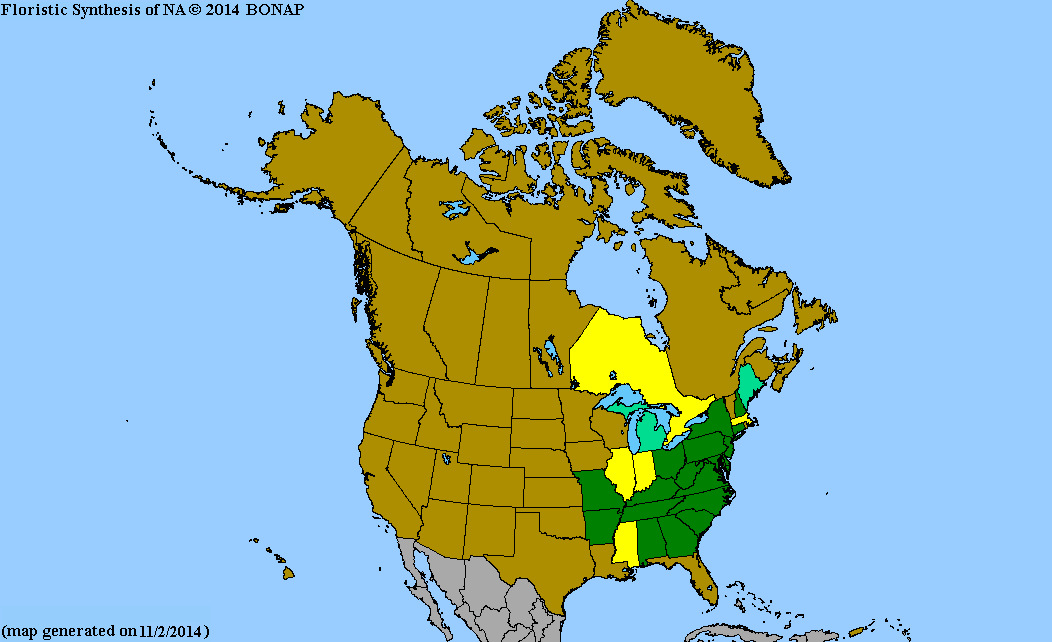
Map courtesy of The Biota of North America Program.
Map color key
Search Our Database: Enter any portion of the Scientific, Common Name, or both.
Do a general Google search of the entire site:
#ad
 Follow USWildflowers on Twitter
| | Site: Reflection Riding, Hamilton County, TN Date: 2011-May-27 | Photographer: Gerald C. Williamson
Nikon D7000
Tamron SP 90MM f/2.8 AF Macro | | lack Cohosh has terminal inflorescences on several branches on the upper stem. They are long, dense racemes of white blossoms. | | 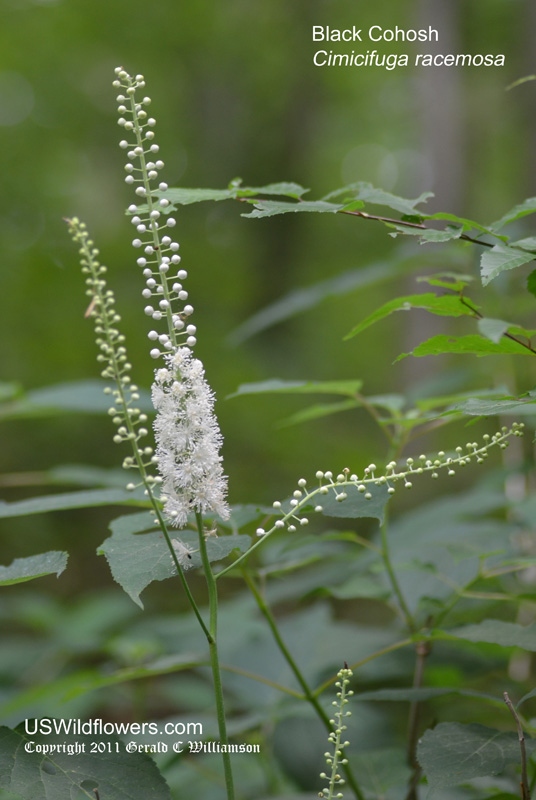
| | Site: Reflection Riding, Hamilton County, TN Date: 2011-May-27 | Photographer: Gerald C Williamson
Nikon D7000
Tamron SP 90MM f/2.8 AF Macro | | The individual blossoms of Black Cohosh have no petals, consisting of a large number of white stamens on long white filaments surrounding a single, sessile ovary. | | Click on the photo for a larger image
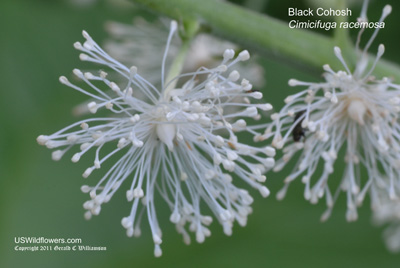
| | Site: Reflection Riding, Hamilton County, TN Date: 2011-May-27 | Photographer: Gerald C Williamson
Nikon D7000
Tamron SP 90MM f/2.8 AF Macro | | Black Cohosh can grow in large colonies in moist open forest areas and roadsides. | | Click on the photo for a larger image
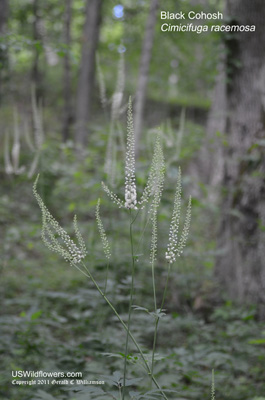
| | Site: Reflection Riding, Hamilton County, TN Date: 2011-May-27 | Photographer: Gerald C Williamson
Nikon D7000
Tamron SP 90MM f/2.8 AF Macro | | The leaves are compound, both basal and alternating on the stem, making for colonies to be quite densely leafy. The margins of the leaflets are toothed. | | Click on the photo for a larger image
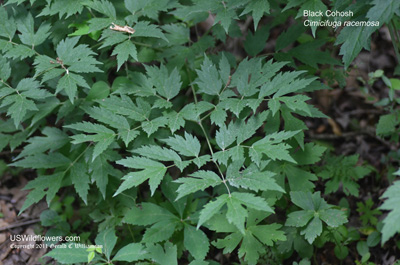
|
|
|
| |
| #ad
|
|






